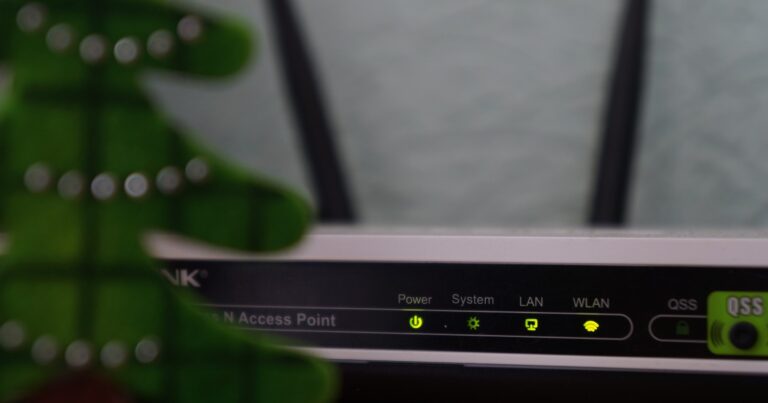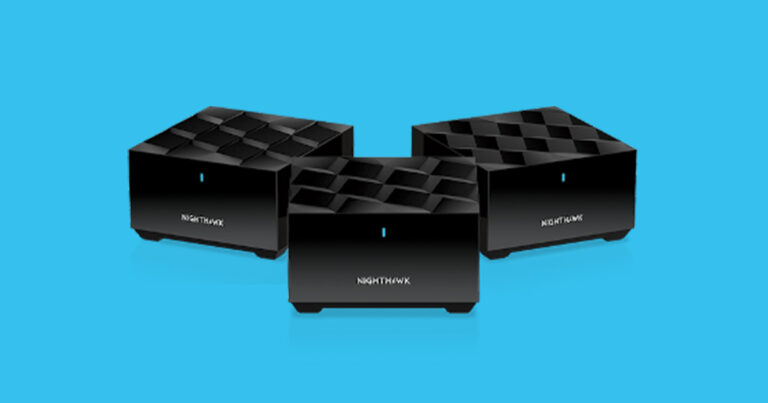All of the essential information on the latest WiFi 6 standard in Australia.
What is WiFi 6?
What is WiFi 6?
- Faster speeds
- Better battery life
- Less congestion with multiple devices
- Expensive routers
- Limited availability of modem routers
WiFi 6 is the latest wireless standard allowing you to achieve better speeds, longer battery life and less congestion across the network.
Sometimes WiFi 6 is called by its full jargon name, IEEE 802.11ax, and while a lot of that name isn’t particularly important, those two letters on the end – ax – are what you’re looking for on a product spec sheet to confirm whether it supports WiFi 6.
These days, there’s a range of WiFi 6 devices, including WiFi 6 smartphones like the iPhone 13 and Samsung Galaxy S22 ranges, which can tap into the speedy perks of the latest wireless standard by connecting to a WiFi 6-compatible router or modem-router.
If Seinfeld was still around, amid discussions of a myriad of newfangled trends, main man Jerry Seinfeld may well ask: “What is the deal with WiFi 6?” And while I won’t even try to wax lyrical about his observational style of answering such a rhetorical question, it's a question that more than a few consumers might find themselves asking before too long.
WiFi 6 vs WiFi 5

Wireless connectivity has been around since 1997 with the launch of the original 802.11 wireless standard. Back then, wireless speeds were restricted to 2Mbps, whereas 2013 saw the arrival of WiFi 5 and theoretical speeds of at least 433Mbps. WiFi 6 launched in 2019 and can achieve theoretical speeds of at least 600Mbps but up to 9,608Mbps.
The table below shows the core differences between the six WiFi generations.
It’s important to note that the top speeds per WiFi generation are theoretical. You might consider upgrading to WiFi 6 over WiFi 5 for the speed benefits. The other big perk is the increased network capacity so more devices can connect simultaneously, which is particularly important moving forward as the average home has more and more connected devices.
Like previous WiFi generations, WiFi 6 is backwards compatible with earlier versions, meaning if you have WiFi 6 devices, they can still connect to WiFi 5 (or older) routers and, similarly, WiFi 5 (and older) devices can connect to a newer WiFi 6 router. The same rules apply for WiFi extenders.
WiFi 6 speed in reality
In extremely optimal conditions, you can expect device speeds of up to 1.523Gbps with WiFi 6, but there are several big disclaimers. To reach these speeds, you’re effectively dealing with local network transfers and not online speeds. Why? Australian internet currently maxes out at 1Gbps tops (NBN Ultrafast), with 250Mbps NBN Superfast a quarter of the max speed, and NBN Fast (100Mbps) the more ubiquitous kind of broadband that’s 10 times slower than the max speed of NBN Ultrafast. Basically, don’t look at a WiFi 6 upgrade if you’re after faster internet speeds.
Even with ultrafast internet, you need both a WiFi 6 device and a WiFi 6 router to start to tap into these kinds of speeds.
Finally, typical wireless networking disclaimers come into play. Speeds are ultimately determined by how far away you are from the router, what interference may impact performance, and which frequency you’re connected to (e.g. 2.4GHz or 5GHz).
If you want to take advantage of WiFi 6 speeds when it comes to internet, your best bet is an NBN Ultrafast plan. The NBN Ultrafast WiFi plans below are ranked in terms of price.
Though not as fast, there are more options when it comes to NBN Superfast, and you can see the top 10 picks below in terms of price.
The majority of fixed-line NBN users (i.e. those in metro areas) can get faster internet speeds by opting for NBN Fast. Below is a breakdown of the top 10 NBN Fast plans in terms of price.
Another option that those seeking faster speeds might want to consider is a 5G modem. With potential speeds of 20Gbps, 5G is eyed as not only a nifty upgrade for smartphone users but also a fixed-line internet replacement for people who can’t access reliable NBN.
You can check out the widget below for a round-up of 5G home internet plans.
WiFi 6 vs WiFi 6E
WiFi 6 hasn’t been around for too long but there’s already a revision: WiFi 6E.
For years, the routers and NBN modems in our homes have broadcasted over either 2.4GHz or 5GHz bands. WiFi 6E supports the 6GHz band, which means access to more WiFi channels and, therefore, reduced network congestion and fewer dropped signals. Other benefits include extremely low latency, higher-capacity networks, extended battery life for compatible devices, and gigabit speeds.
While the FCC has approved the use of the 6GHz band in America, it’s up to the ACMA in Australia as to whether the band will be approved for use Down Under. Even if the 6GHz band is approved for unlicensed use in Australia, tapping into its perks will require WiFi 6E router and WiFi 6E device compatibility requirements.
WiFi 6 routers and WiFi 6 modem-routers

At the time of writing, WiFi 6 modem-routers weren’t really a thing in Australia (outside of importing a rare model from overseas), but WiFi 6 hardware is growing in popularity.
Prices range from around $200 all the way up to $900 for a WiFi 6 router. D-Link, Netgear and Asus are the brands to look for in Australia, with the D-Link DIR-X1560 an entry-level option, the Asus RT-AX58U a mid-range choice, and the Netgear Nighthawk XR1000 a more expensive, fully featured pick.
What about WiFi 6 mesh routers?
For larger homes or even smaller ones that are prone to wireless signal interference, mesh networks offer an easy-to-use unified solution for full-home connectivity. You can read more about WiFi systems here, but the reality is that WiFi 6 mesh routers are becoming more popular for future-proofing homes than traditional WiFi extenders and boosters.
The Netgear Nighthawk Mesh WiFi 6 System is a discrete and speedy performer that’s comparatively cheaper stacked next to the competition. The TP-Link Deco AX1800 is more of a mid-range WiFi 6 mesh alternative, or you can spend a lot of money on the Netgear Orbi WiFi 6 range for epic coverage. Amazon's networking line also spans the gamut, with both the Amazon eero 6 and Amazon eero 6 Pro offering WiFi 6 connectivity at a competitive cost.
WiFi 6 devices

WiFi 6 networking devices are growing in popularity, and the same is true of WiFi 6-compatible devices, predominantly spread across smartphones and laptops (though the PlayStation 5 also supports WiFi 6). Here’s a list of some of the more popular devices that are WiFi 6 compatible:
- iPhone 13, iPhone 13 Mini, iPhone 13 Pro, iPhone 13 Pro Max
- iPhone 12, iPhone 12 Mini, iPhone 12 Pro, iPhone 12 Pro Max
- iPhone 11, iPhone 11 Pro, iPhone 11 Pro Max
- iPhone SE
- Samsung Galaxy S22, S22 Plus, S22 Ultra
- Samsung Galaxy S21, S21 Plus, S21 Ultra
- Samsung Galaxy S20, S20 Plus, S20 Ultra
- Samsung Galaxy S20 FE, S20 FE 5G
- Samsung Galaxy S10, S10 Plus, S10E, S10 5G
- Google Pixel 6
- PlayStation 5
- Asus VivoBook Flip 14
- Dell XPS 13 (2020 edition)
- Microsoft Surface Laptop Go
- Microsoft Surface Laptop Go 2
- HP Spectre x360
Frequently Asked Questions
WiFi 6 is the latest wireless standard, which promises to offer a number of advantages and improvements on what the previous WiFi 5 could offer.
Unless you're looking to get the best speeds out of any devices you own that already support the new standard, you don't need to rush out and upgrade your home network to WiFi 6 just yet. Give it a year or two, and WiFi 6 will probably be standard in most new devices that rely on wireless connectivity in one way or another.
Compared to earlier standards like WiFi 5,WiFi 6 promises to deliver faster speeds, reduced power consumption and less network congestion.
Similar to 5G and 4G, the benefits offered by WiFi 6 over WiFi 5 are clear. However, whether or not its worth upgrading your tech stack to take advantage of this innovation has more to do with your individual circumstances. The more tech you have in your home, the more likely it is that WiFi 6 will be a worthy investment.
Are the only things on your WiFi network a phone and a laptop that you use to answer emails? If so, then investing in a WiFi 6 router might be a bit overkill. On the other hand, if you're household connection is struggling under the strain of several dozen gadgets and a bevy of smart home devices, then it might be worth investigating how much is involved in upgrading your setup to take advantage of WiFi 6.
Related Articles




